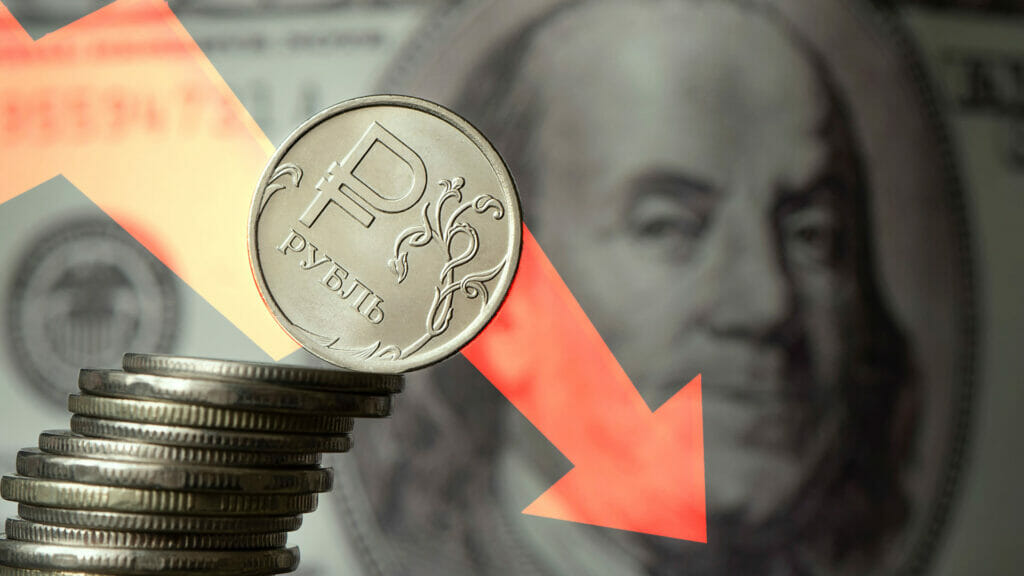Ruble’s exсhange rate breaks through the ceiling

The exchange rate of dollars has broken the ceiling of 100 rubles on the Moscow Exchange (MOEX), a very important mark from a psychological point of view, according to analysts and investors.
At the moment of this text publication, the U.S. dollar was traded for 100.87 rubles which is 1.44 rubles or 1.4% higher than the previous trading session on August 11.
As of August 11, the weighted average rate between the ruble and the tenge on the Kazakhstan Exchange (KASE) was 4.55, a 0.02 tenge (0.5%) decrease compared to the close on August 10.
The ruble’s exchange rate has been rapidly decreasing since the end of July. Since then, the Russian currency lost a significant part of its value compared to key global currencies and Kazakhstan’s tenge. Experts believe that the lowered oil and gas revenues by the Russian government have caused lower interest in rubles from exporters, while importers, people and businesses leaving the Russian market show much more interest in foreign currency.
Last year, when Western sanctions caused a sharp decline in imports and made the exchange of the ruble unnaturally high, Russia managed to find alternative routes for its exports and boosted purchases of imported goods, which also led to higher demand for foreign currency.
Currently, the Bank of Russia and the country’s Ministry of Finance are trying to improve the situation through the fiscal rule mechanism, although their point of view didn’t match at first. The ministry decided to keep its practice of buying foreign currency for the Russian National Welfare Fund with the help of extra oil revenues. However, the Bank of Russia, the official agent representing the interests of the fund, said that it would stop buying Chinese yuan to support the exchange rate of the ruble under the fiscal rule. Moreover, the regulator is selling part of the foreign currency that is accumulated in the fund in order to buy rubles. This move meets the rule by the government of Russia concerning costs for investments.
Experts told Kursiv that the exchange rate of the tenge toward the ruble and the US dollar is going to stay mostly the same in the middle term. In addition, Kazakhstan can benefit from the situation with surging oil prices because the country sells it with no discounts or limitations, unlike Russia.

